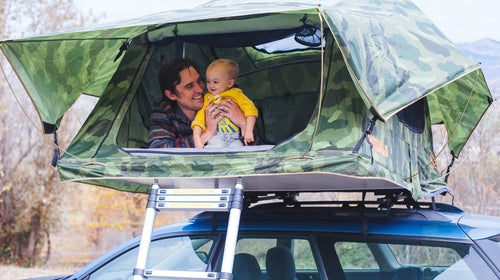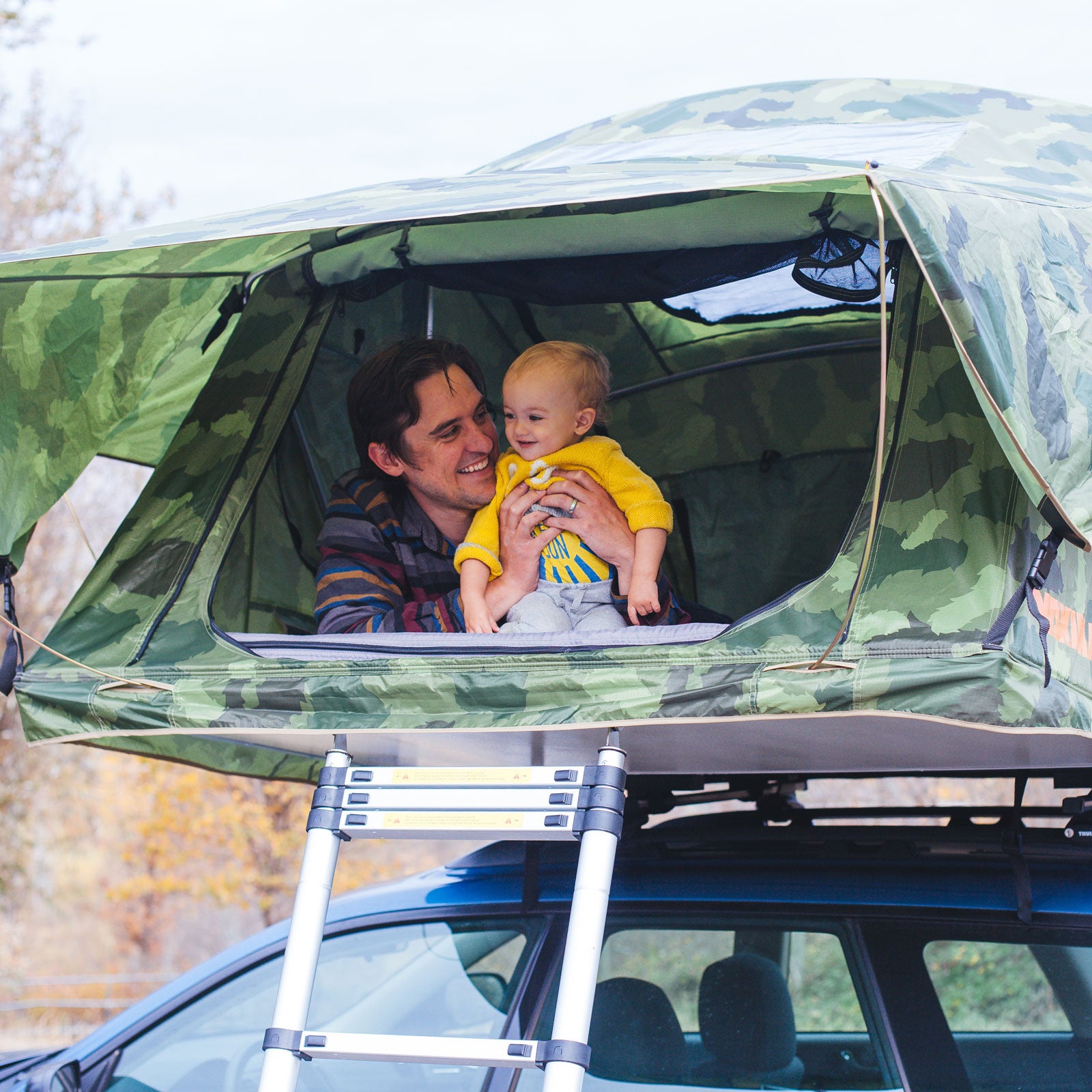Since first trying a rooftop tent three years ago, I’ve become a convert. I now sleep in one on most of my car camping trips. They offer a big platform, plus some separation from the ground and hungry raccoons (or worse) that may come foraging for scraps. I’m not the only convert. Rooftop tents are suddenly everywhere. I recently tested three models in this relatively new category with the goal of seeing which would come out on top—no pun intended.
The Test
I set up and took down all three tents on my Honda Element, a friend’s Subaru Outback, and another friend’s Subaru Forester to gauge ease of use. I also slept overnight in each one, napped in them during the day, and had the Outback and Forester owners do the same to get a consensus on comfort. In the end, I opted to make each tent a winner in a specific category given their different strengths.
Best for All Four Seasons: Tepui Kukenam 3 Ruggedized ($2,100)
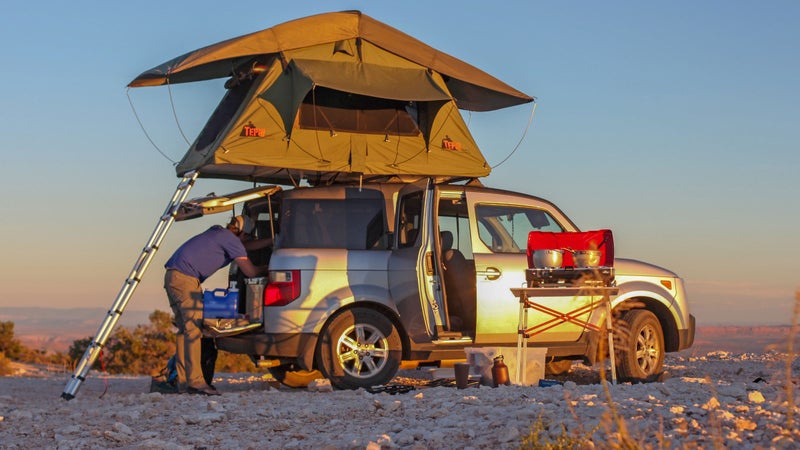
Specs
Weight: 180 pounds
Dimensions When Closed: 56 x 48 x 12 inches
Living Space Dimensions: 56 x 96 x 52 inches
Performance
Getting the Tent on the off the Car: 1/5
Pitching/Collapsing the Tent: 3/5
Comfort: 5/5
Ease of Use: 3/5
Takeaway
At a full 60 pounds heavier than the Roofnest Sparrow, is a beast. Getting it onto my Element’s roof rack was no joke, and it should go without saying that it takes at least two people (and no small amount of swearing). The Kukenam flips open and closes like a book, so even after it’s on your car, it’s still a bit of a bear to pitch and break down, especially if you’re working alone. That said, once the setup is complete, this is my favorite tent ever—rooftop or otherwise. For one, it boasts great climate control. I was just fine sleeping in it on colder days with only a cheap synthetic comforter, yet the Kukenam wasn’t stifling when temperatures spiked. The secret is that the heavy-duty canvas-like fabric holds heat, but there’s ample ventilation with the windows open and rain fly off, and the added height from being perched on top of the car helps in catching cool breezes. Another plus is the Kukenam’s extremely large footprint. I was able to fit inside the tent comfortably with a weekend’s worth of gear, and my wife, daughter, and I each had plenty of space on the cushy 2.5-inch-thick mattress.
Best for the Budget Conscious: Yakima SkyRise Poler ($1,521)
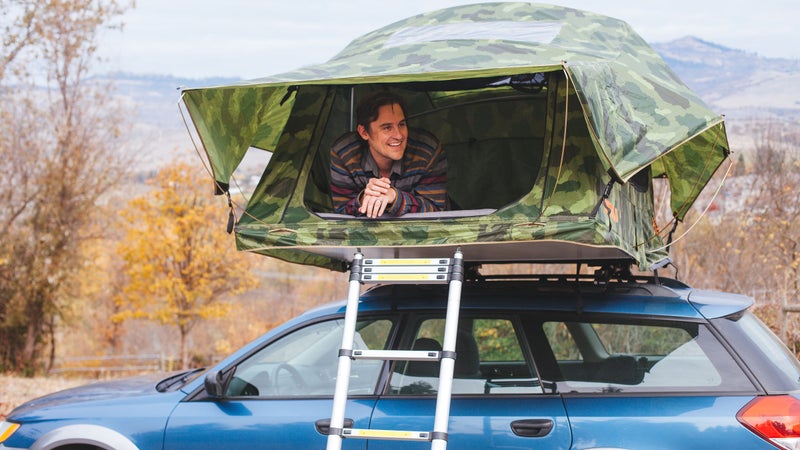
Specs
Weight: 115 pounds
Dimensions When Closed: 56 x 48 x 16.5 inches
Living Space Dimensions: 56 x 96 x 48 inches
Performance
Getting the Tent on and off the Car: 5/5
Pitching/Collapsing the Tent: 4/5
Sleeping: 3/5
Ease of Use: 5/5
Takeaway
was by far the easiest to get on and off the roof of all three cars. Credit the pinchers—Yakima calls them speed clamps—that look vaguely like the claws on those impossible-to-win arcade crane games. They close around the crossbars and can be tightened or loosened simply by turning a knob, which I appreciated all the more after grumpily struggling with the bolt-based attachments of the other two tents on this list. Yakima’s system saved me a full 20 minutes of setup time. In terms of sleeping and setup, this tent was similar to the Kukenam—it folds and unfolds the same way and has comparable space when deployed, as well as similar big windows to facilitate airflow. There is one very large difference: weight. The lighter SkyRise was considerably easier for one person to deploy and reclose. However, it didn’t have the same four-season chops, given the lighter-fabric wall (testers had to seriously bundle up during a night in the low forties). But if you plan to camp only from spring to fall, this tent is plenty warm, and it didn't let in a drop of rain during a nighttime downpour. Finally, it’s considerably less expensive than the other two tents.
Best for User-Friendliness: Roofnest Sparrow ($2,495)
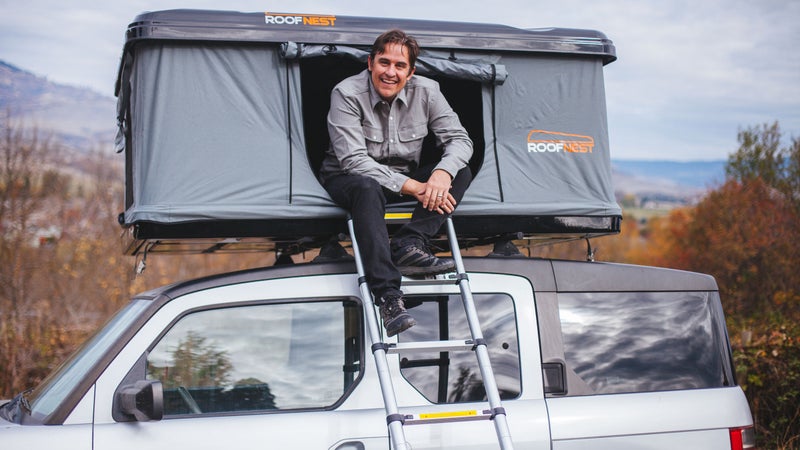
Specs
Weight: 120 pounds
Dimensions When Closed: 47 x 82 x 11 inches
Living Space Dimensions: 45 x 80 x 36 inches
Performance
Getting the Tent on and off the Car: 3/5
Pitching/Collapsing the Tent: 5/5
Sleeping: 4/5
Ease of Use: 5/5
Takeaway
“If I owned a Tesla, this would be my rooftop tent, ” I remarked to a friend as we put on top of my car. The hard-shell Roofnest is a sleek number. And you’re unlikely to throw out your back opening and closing it. Thanks to pneumatic arms at all four corners, all you do to deploy the tent is unclip the straps and give each side a little nudge to make the roof pop straight up. The interior is insulated on the top and bottom; coupled with the burly walls, this gives the Sparrow impressive heat retention. Plus, the 2.75-inch mattress is the thickest of the bunch. This tent would have been my favorite except for one drawback: a considerably smaller footprint than the other two. Whereas those tents’ flip-open construction doubles their width when deployed, the Roofnest stays square. I was able to squeeze in there with my wife and daughter, but it made for claustrophobic night for the three of us.
